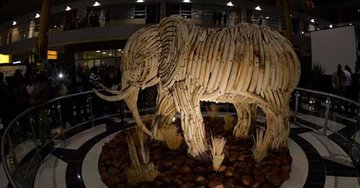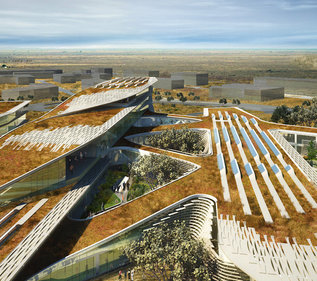
Speaking at the unveiling, the president said the sculpture was intended “to raise our collective consciousness about the plight confronting the African elephant.” The most recent estimate of elephant numbers in Africa, from 2007, is between 472,000 and 600,000. Around a third of them are within the borders of Botswana.
Poaching rates of elephants have surged during the past three years, fueled by rising demand for illegal ivory in Asia, mostly China. A 2014 study revealed that between 2010 and 2012, up to 100,000 elephants were slaughtered for their ivory. The placement of the elephant sculpture at Botswana’s capital city airport is symbolic, as it represents the international dimension of the illegal ivory trade, president Khama said. “Much of the ivory that leaves the borders of African elephant range states finds its way out in the cargo holds of aircraft and the baggage of passengers.”
The president commended the efforts by Prince William and the Royal Foundation, who recently set up a task force that will work to shut down the transport arteries of the criminal syndicates who run the illegal ivory trade. Khama also called upon countries that conserve elephants—the range states—in Africa to join the Elephant Protection Initiative. Launched by the Botswana government, this project strives, among other things, to close all domestic ivory markets.“Legal ivory trade cannot and must not be used to launder the illegal ivory in the hands of the criminal syndicates,” he said.
Six artists––coordinated by Joseph Piet––took three full months to complete the ivory sculpture. The sculptors came from a youth artist, community-based project called Thapong Visual Arts, based in Gaborone.Khama congratulated all those involved in the work. He said the elephant “will serve as a reminder to all who pass through this building that one live elephant is worth so much more than all the pieces of art made from ivory gathering dust in homes far removed from the African plains


